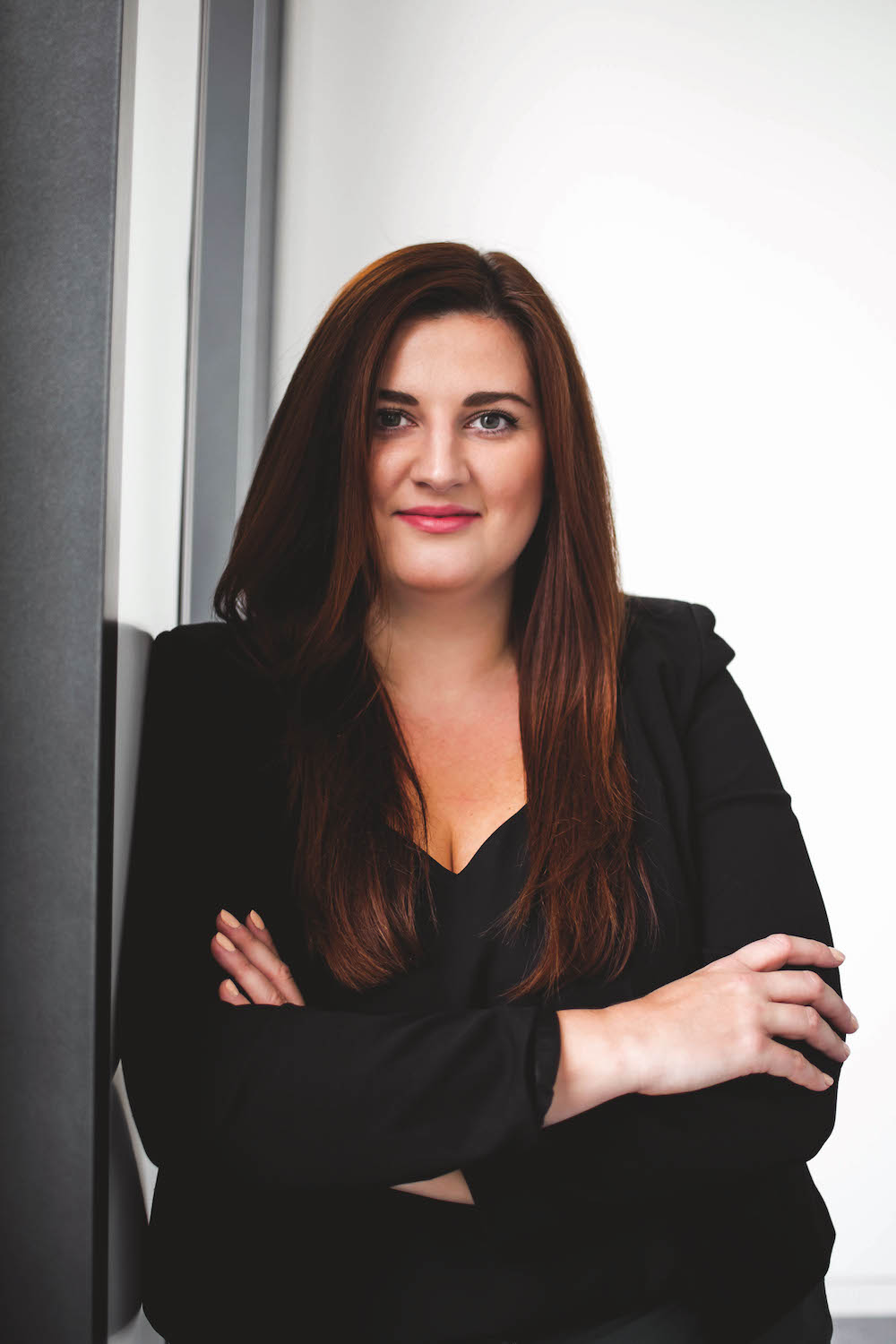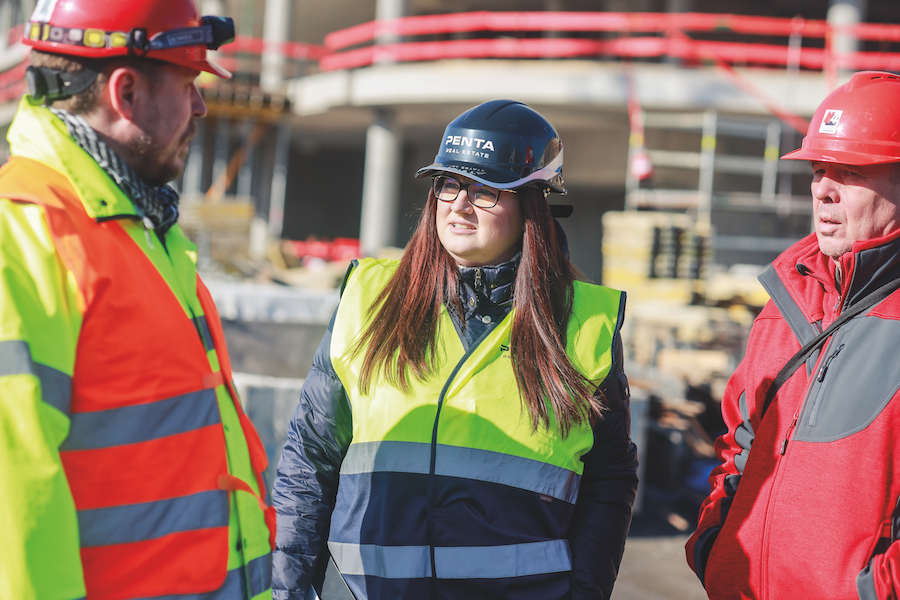“MASARYČKA is in my HEART”

Lucia Pálková, Project Manager, Penta Real Estate
How many female names can you recall in connection with architecture and civil engineering? Probably only Eva Jiřičná and Zaha Hadid. Let me introduce you to Lucia Pálková, who certainly belongs among the notable ladies of the Czech construction world. She is the one responsible for the construction of two multifunctional buildings in Prague Florenc and the revitalization of the area according to the famous Zaha Hadid design. What challenges arise from this project? What is it like to cooperate with the Zaha Hadid Architects studio? And how does she deal with the project ́s pitfalls, whether in the form of the pandemic or public criticism?
The first question asks itself, considering the theme of this special magazine edition. How do you find being in a field where finding a woman is still quite rare?
Civil engineering is not a highly preferred field for women, but over the last few years we can observe an increasing number of them here too, even in management positions. I can see it around me, in the Penta Real Estate company where I work the number of female colleagues I have is increasing every year. The interesting thing is that, before, women used to work mainly in design offices or studied architecture, while today they have key positions right at the construction sites too. At Masaryčka, for example, we also have a woman acting as chief structural engineer on behalf of our contractor. On the other hand, there is no need to point out that there are such architectonic icons as Zaha Hadid or Eva Jiřičná. I highly respect both – they are truly world-renowned names.
Let us move onto the famous Zaha Hadid. How does it feel to work on the design of such an icon?
Unfortunately I did not get a chance to meet Zaha Hadid in person since I only started working on the project after she had already passed away. However, we cooperate with her London studio, Zaha Hadid Architects. From there, the Masaryk railway station project is supervised by Jakub Klaška, who studied with her in Vienna and whom she chose for her team back then. He was her right-hand man with Masaryčka so he has been further developing the project in the spirit of her legacy. Cooperating with this architectural studio is really something special, and I am sure I am not just speaking for myself. They do things differently; they do not accept any limits. We have been through an interesting experience with them while working on a walling design or Masaryčka ́s façade for instance. The London studio made it very clear that no fasteners may be visible no screws etc.
The thing is that the shapes of the façade are atypical, and it is this intricate character of shaping that makes Zaha Hadid ́s designs sometimes extremely difficult to implement. We have finally dealt with all their requirements. The key principle is that you must simply find a solution every time – do not rely on tradition and do not be afraid to look for new methods. The case of Zaha Hadid ́s 520 West 28th Condo project in Manhattan is well known. The stainless-steel façade there was so tricky that nobody would have been able to pay for its production in a big production hall. Therefore, it was finally tailor-made by small locksmith businesses, literally in their back yards. Zaha Hadid ́s structures are truly timeless, and not only for their innovative methods and materials. It is normal in the Czech Republic that after 15 to 20 years administrative buildings must go through some repairs where large common spaces or the buildings’ façades are remade. We believe that in the case of Masaryčka the initial cost will be returned in the form of comfort and long-term sustainability of design.
Considering the scope of running such a large complex project, which phase is more difficult preparation or implementation?
In Masaryčka ́s case, the preparation took more than six years. The implementation phase will be considerably shorter but definitely not easier. Both phases have their own pitfalls. Now, there is a really challenging year and a half ahead of us, which will be crucial for maintaining the quality, cost, and above all the deadlines (of the project). The building is mostly occupied already and the contracts with the tenants always specify the date they move in. Everything has to click into place.

What specific work activities do you enjoy most in relation to project management? And which would you like to delegate?
I definitely enjoy working on design, looking for the best solutions in discussion with a project team, and of course generally working with people. On this project, I meet a lot of them, from various fields of expertise. What’s killing me is (working at) desks the administration is part of this type of work it is demanding and time-consuming, and I do not know anybody who would love it. Nevertheless, it still belongs to our work too.
How do you cope with challenges connected to the pandemic, whether in the form of price increases or limited human capacity?
The material prices increase is very high, but we know how to deal with this factor. We select our suppliers very carefully and therefore can afford to sign long-term agreements, which have now proven to be beneficial. We managed to purchase enough materials in advance. We do not have a bad experience with construction downtimes due to illness. Penta pays, it is a good partner (to work with), which means nobody wants to cause any complications for us. Contractors get their workers tested on a regular basis to prevent mass quarantines. Work relationships are about mutual trust and reliability. Everybody must simply learn how to manage their own problems.
We have talked about the expectations and requirements of the architecture studio. Masaryčka provoked plenty of emotional reactions, which were not always positive… How do you cope with this type of pressure?
We dedicated a lot of time to discussions; primarily with experts but also with representatives of the public; back during the preparation phase of the project. It is evident that public interest in land development and new projects in Prague is increasing. The public should be engaged in discussions as much as possible receiving feedback is important and usually helps the project. Adequately informing the public prevents protests. They usually result from insufficient communication. On the other hand, we have to realize that we cannot make everybody happy.
Are the Czechs conservative about modern architecture? I see that in neighbouring Bratislava they are implementing more daring building designs…
I would say that, especially in Prague, there are fears of combining traditional and modern buildings. On the contrary, I search for such cases when I travel abroad. I like discovering places where the blending of the old and new architecture is absolutely natural. Like in Dresden, Hamburg, London, and Antwerp… Unfortunately, we do not have many new buildings in Prague, but in most cases their stark contrast can only help the diversity of the city if the historic buildings are in good shape. This is also the reason we started with the reconstruction of the listed railway buildings they will form a whole with the new architecture by Zaha, therefore their reconstruction was our first logical step in a planned change of the locality.
And a question to finish with – what are you looking forward to in 2022?
At Masaryčka the process of sampling the interiors and façade, greenery, and all possible details. A complex reconstruction of all surrounding infrastructure will also begin. It will be a very busy year at work. I am personally looking forward to my trips abroad; I will enjoy those and get some real rest. First, I am going to travel to Barcelona, where, surprisingly, I have not been yet. Travelling can give you more of a ‘big picture’ understanding and inspiration, which is important in every profession, not only civil engineering.
Text: Linda Štucbartová; Photo: Archive


[…] You can read the interview with Lucia Pálková, Project Manager, Penta Real Estate – “MASARYČKA is in my HEART” – https://www.czechleaders.com/interviews/lucia-palkova […]